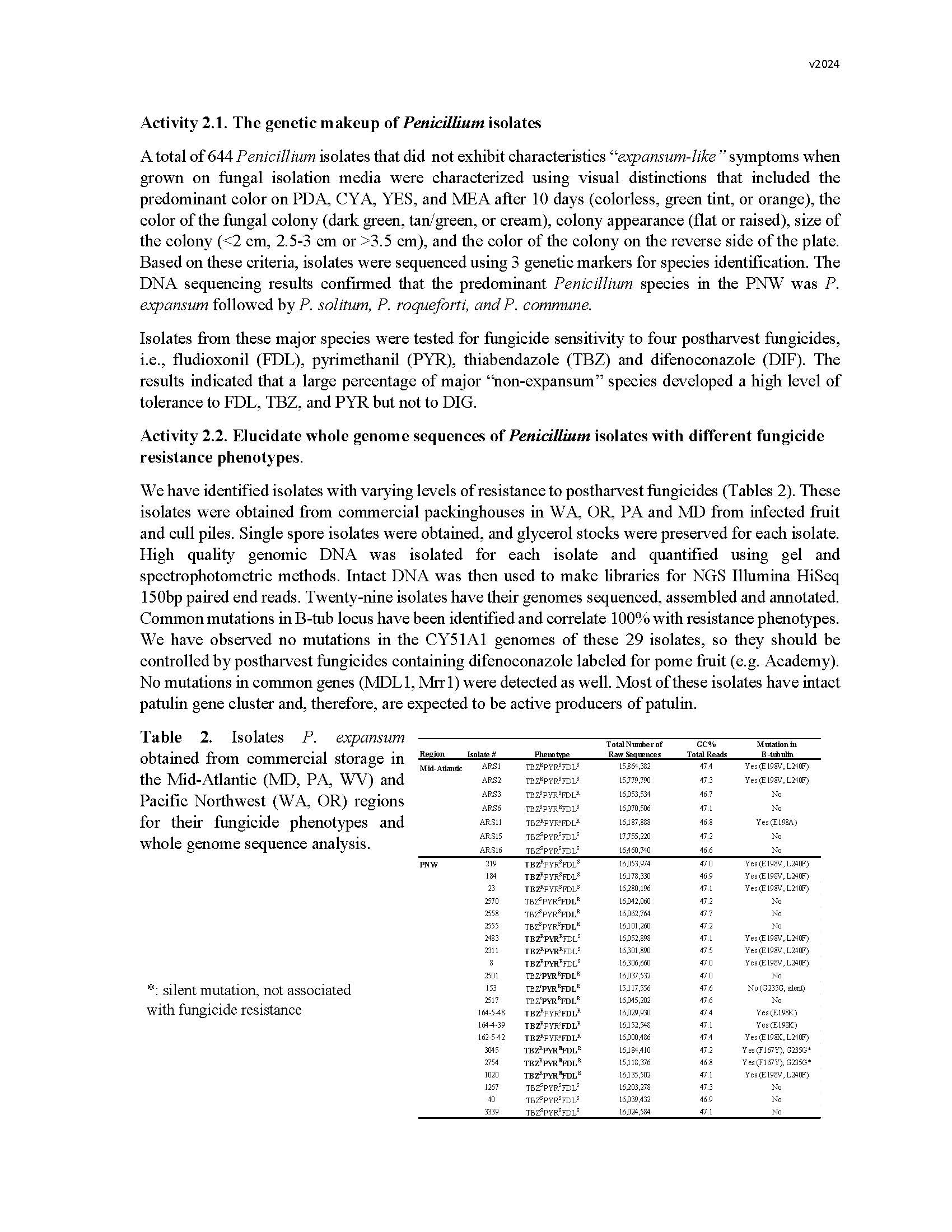Understand and mitigate fungicide resistance in Penicillium spp.
Author: Achour Amiri
Published: 2024
Summary: Blue mold of apples is a major threat to apples in storage. In this three years project, we conducted a risk assessment study to assess whether populations of the blue mold fungus Penicillium expansum that acquired resistance to one, two, or three postharvest fungicides could cause a greater or lower risk to the packers. We have shown that the resistant populations may endure some fitness penalty which does not seem to prevent them from being as virulent as the sensitive populations on detached fruit. This warrants the implementation of adequate resistant mitigation approaches to reduce risks of control failure. We also investigated whether other Penicillium species other than P. expansum can cause a greater risk for fruit packers. We have identified 13 different Penicillium species, of which three species are widespread, that can cause blue mold on apples. Most isolates from the 13 Penicillium species showed high in vitro tolerance to the three fungicides most commonly applied to fruit at harvest. Preliminary detached fruit data indicate that these Penicillium species are less virulent than P. expansum after two months in storage on apples treated with thiabendazole, pyrimethanil or fludioxonil. Whether their virulence increases after 9 to 12 months is being studied. We used whole genome sequencing to obtain full sequences of 36 P. expansum isolates from the west and east coasts and their genomes are being annotated. The knowledge will serve to develop molecular tools for detection of resistant populations in the future. In an effort to help mitigate resistant populations of P. expansum to thiabendazole, pyrimethanil and fludioxonil, we have tested eight chemo-sensitizing agents (CSAs) in vitro of which four were tested on apple fruit. Results indicate that tank-mixing the three fungicides to which resistance is observed with some of the CSAs could potentially enhance their control although additional studies are warranted to optime dosage of the CSAs. Key words: Blue mold, new species, non-expansum, genome, chemo-sensitizers.
Keywords:







